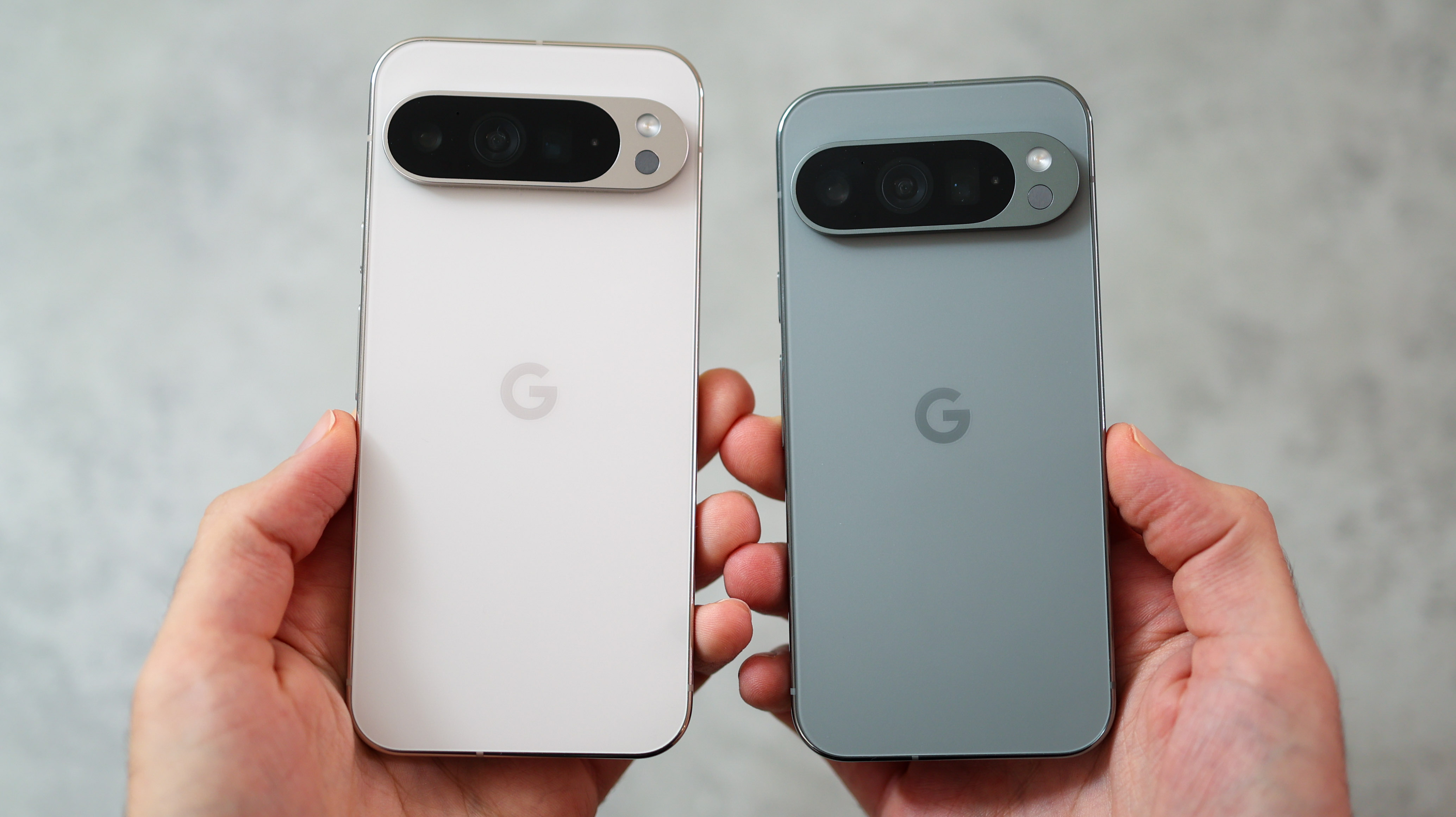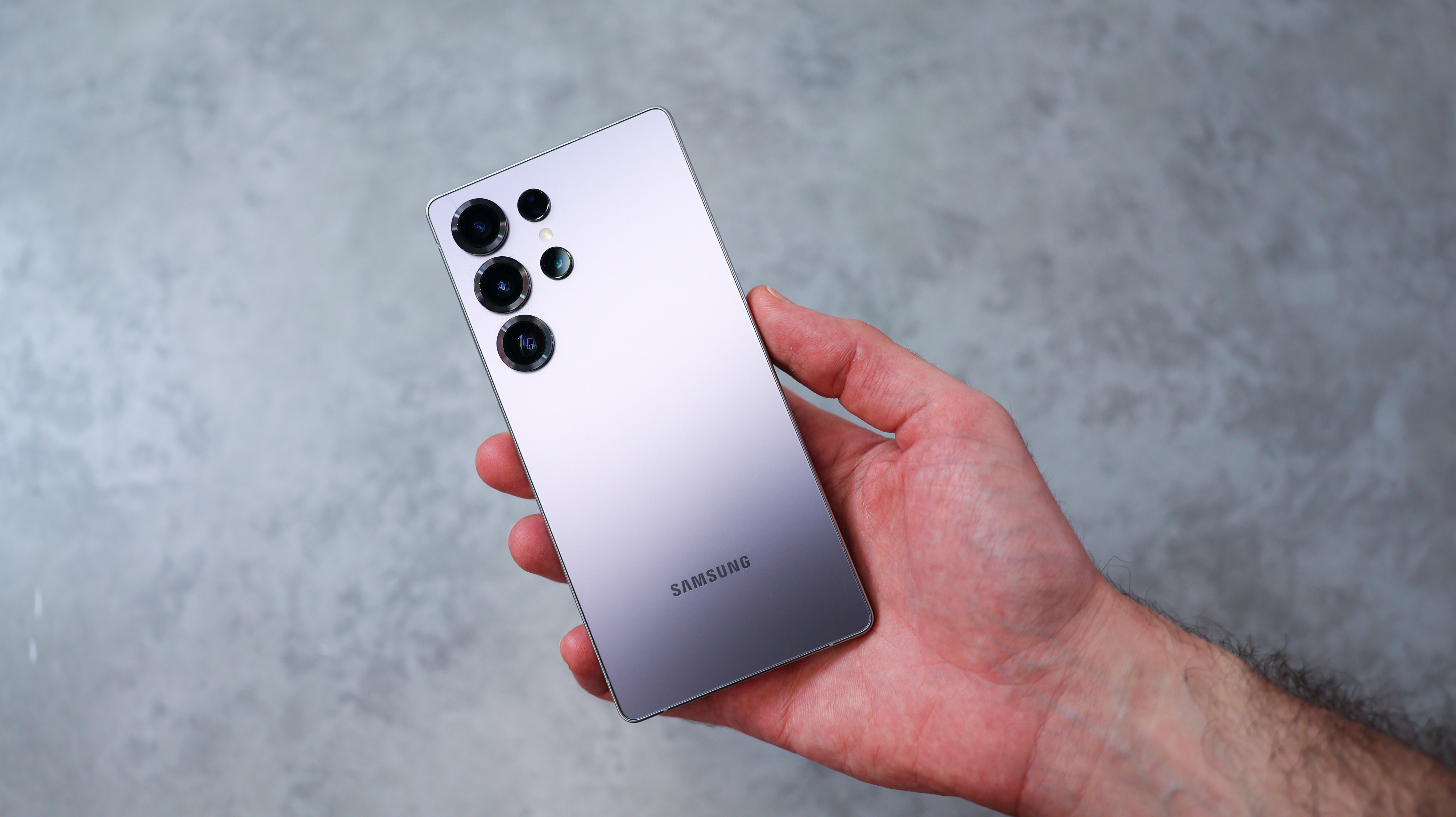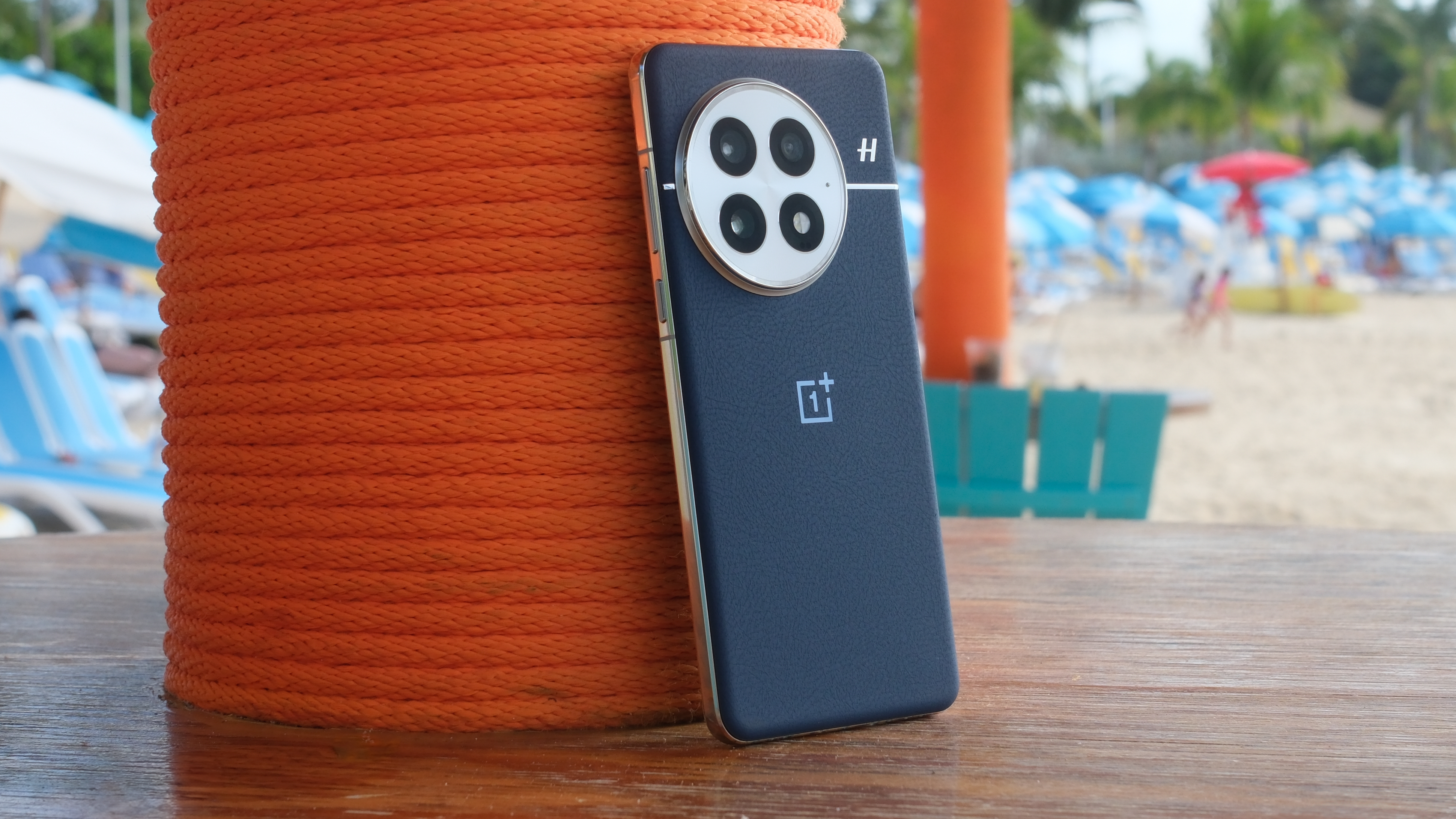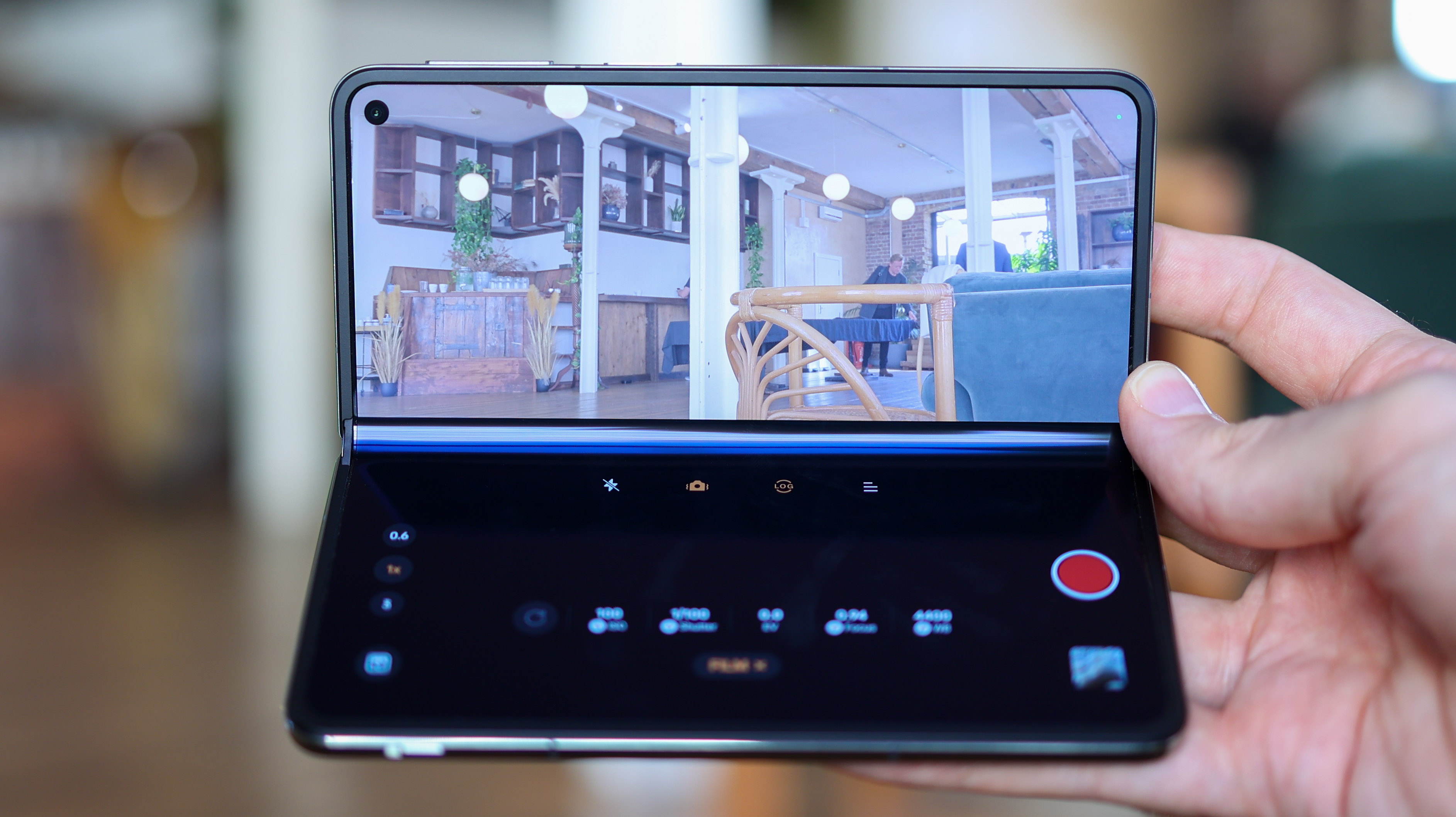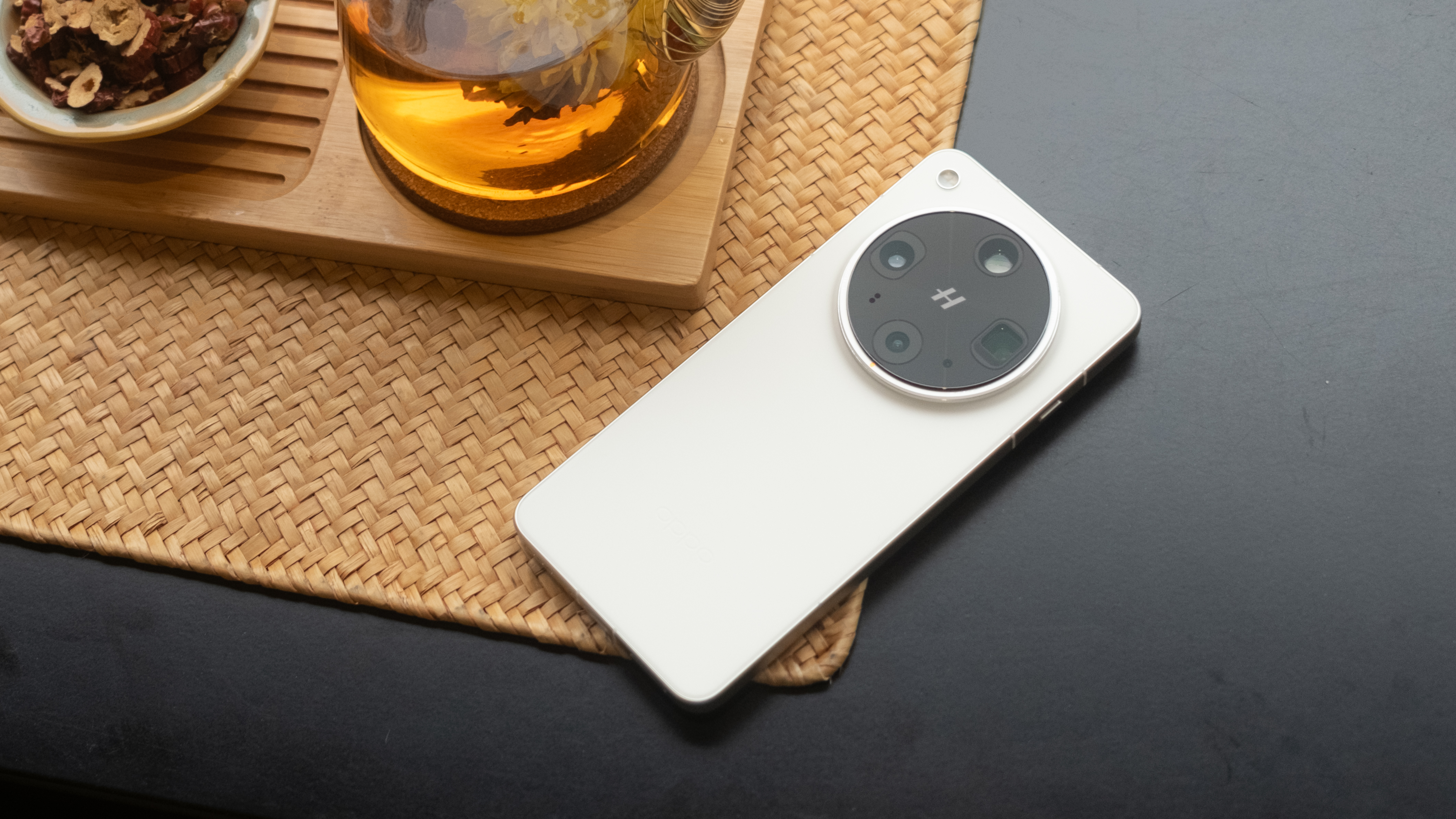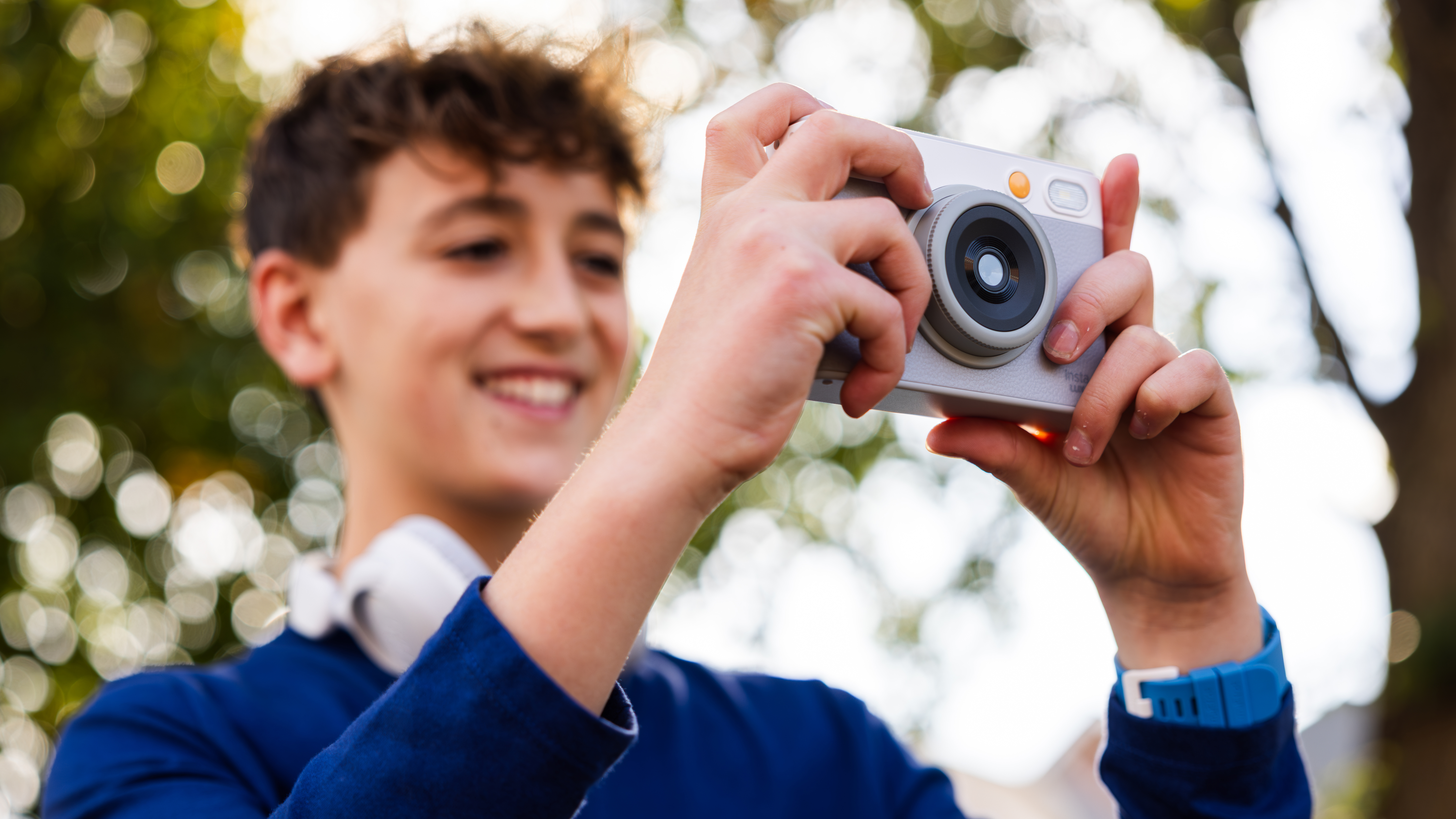The best Android phone for photography: smartphones that give Apple a run for its money
With a lot of options on the market, here are some of the best Android phones for photography to consider for your next upgrade
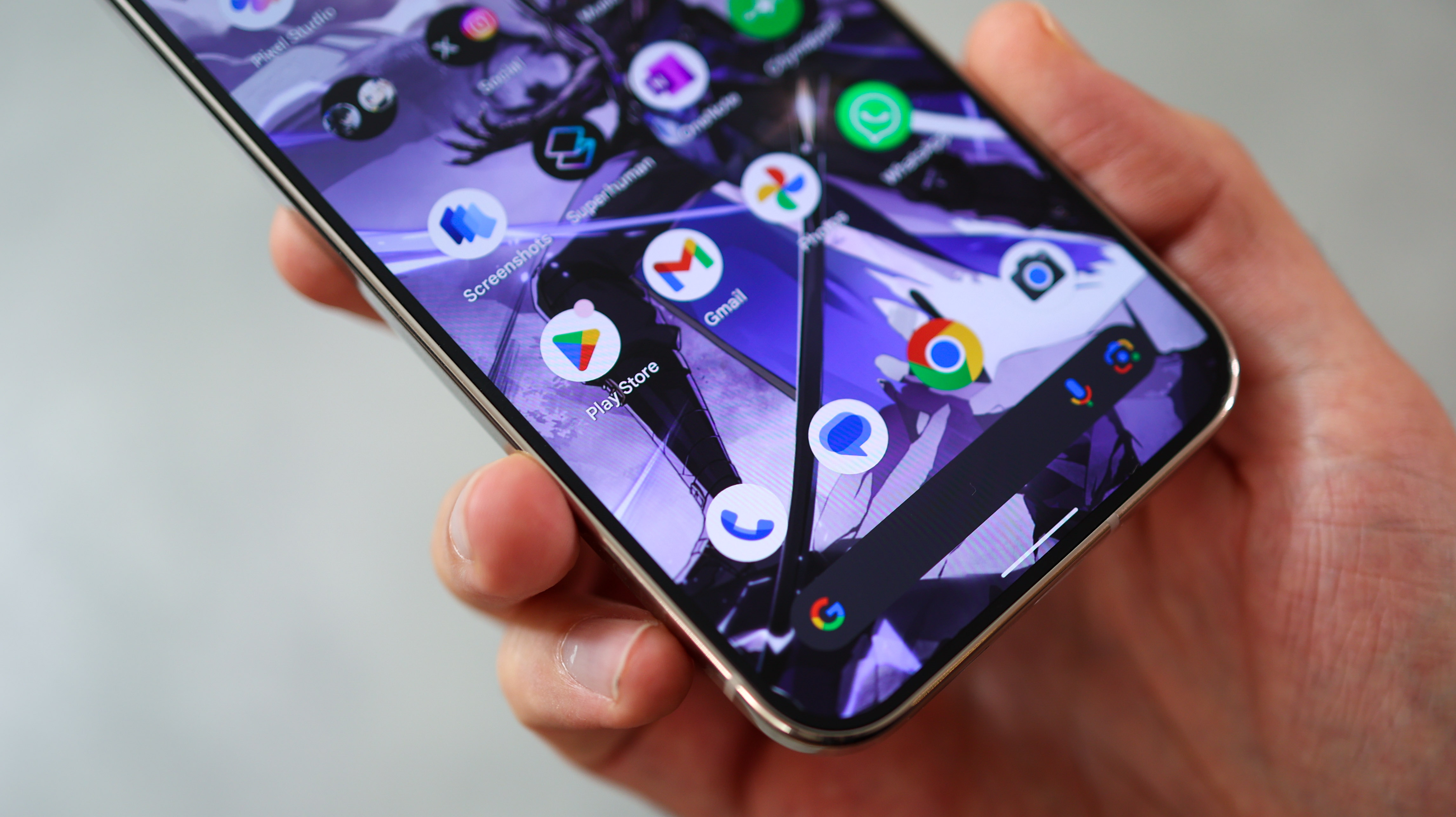
1. Best overall: Google Pixel 9 Pro / Pro XL
2. Best budget: Nothing CMF Phone 2 Pro
3. Best for Samsung fans: Samsung Galaxy S25 Ultra
4. Best value: Google Pixel 9a
5. Best alternative: OnePlus 13
6. Best camera foldable: OnePlus Open
7. Best camera-like experience: Xiaomi 15 Ultra
8. Best telephoto cameras: Oppo Find X8 Ultra
9. Best for AI camera features: Honor Magic 7 Pro
What is the best Android phone for photography right now? Whether you’ve been waiting a while to upgrade your existing Android phone or you’re an iPhone user and you’ve been tempted by some of the latest Android phone releases like the Pixel 9 Pro XL or Samsung Galaxy S25 Ultra, I am here to help you figure out what's right for you.
Why choose an Android phone over the best iPhones? The main reason is variety, Android phones come in a wide range of sizes and form factors, and each offers slightly different takes on what the best camera phone should provide. While some may focus on high camera resolution, others focus on photography features.
Another benefit of the Android platform is that some of them come in at astonishingly competitive prices, which is a direct result of just how many great Android phones are currently available. If you’re looking for a great deal, you should check out our best budget camera phone guide.
There are so many devices worth considering for your next Android phone; however, the devices included here are considered based on their design, the quality of their displays, processing power, battery life, unique features, value, usability – and of course, camera quality! Let's dig in!

Gareth is the Reviews Editor at Digital Camera World – and the person in charge of approving all the latest camera-related tech. As a photography enthusiast, he never stops shooting, taking as many pictures on his Google Pixel phone as on his mirrorless cameras (and constantly surprised by how close the two are getting) he knows how to spot the best Android cameras.
The best Android phones for photography
Why you can trust Digital Camera World
Best Android phone overall
Specifications
Reasons to buy
Reasons to avoid
The Google Pixel 9 Pro and 9 Pro XL offer identical camera systems and user experiences – differing only in size. The Pixel 9 Pro's 6.3-inch display caters to anyone seeking a more compact flagship experience, while the 6.8-inch Pixel 9 Pro XL suits those preferring larger screens. Both models boast flat displays, offering vibrant colors, deep blacks, and smooth 120Hz refresh rates, with peak brightness levels ensuring excellent visibility outdoors. Both models also support fast 45W wired charging, achieving a full charge in under 90 minutes, and include wireless charging capabilities.
Putting the same cameras on both models is an approach that contrasts with other manufacturers that reserve top-tier cameras for larger models – and will be very welcome to small phone enthusiasts. Both devices feature a triple-camera setup, including a periscope zoom.
The camera system includes a 48MP ultra-wide lens with macro capabilities, a 50MP primary sensor with optical image stabilization, and a 48MP telephoto lens providing approximately 5x optical zoom. The 42MP front camera delivers high-quality selfies.
Notably, the Pixel 9 series excels in night photography, producing well-balanced shots across all cameras. The phone is also enhanced by AI-driven photo processing and editing tools with Google's excellent Magic Eraser in the Photos app.
Read our full Google Pixel 9 Pro and 9 Pro XL review
Best Android phone on a budget

Specifications
Reasons to buy
Reasons to avoid
Nothing’s second‑generation CMF handset proves you don’t need deep pockets to get a phone that feels genuinely exciting. For $279 / £219, the Phone 2 Pro upgrades last year’s formula with a symmetrical 6.77‑inch 10‑bit OLED that’s richer, brighter, and smoother than anything else at this price, and it even supports contactless payments thanks to newly added NFC.
The headline, though, is photography. A true triple‑camera array – a 50 MP main sensor, a 50 MP 2x portrait‑friendly telephoto, and an 8 MP ultrawide shoots colourful, natural images, with RAW capture and optional macro or fisheye adapters for creative play. The lack of OIS and the modest ultrawide hold it back, but the main and tele units comfortably narrow the gap to mid‑range rivals.
MediaTek’s Dimensity 7300 Pro and 8 GB RAM keep daily use snappy, though demanding games ask for low graphics. A 5,000 mAh cell routinely leaves 40 % in the tank at bedtime, and 33 W wired charging refills to 60 % in half an hour.
Nothing OS remains a joy: monochrome icons, zero bloat and the new Essential Key give the phone a premium vibe, but the fledgling Essential Space – and its rumoured subscription – feels half‑baked. Combined with only IP54 protection and shorter software support than class leaders, the CMF Phone 2 Pro isn’t flawless. Yet its blend of style, modular fun, and outright value makes it our top budget pick for Android buyers who prize photography and personality over raw horsepower.
Read our full CMF Phone 2 Pro review
Best phone for Samsung Galaxy fans
Specifications
Reasons to buy
Reasons to avoid
The Samsung Galaxy S25 Ultra has long been the default Android flagship for so many people, blending premium design with cutting-edge performance. This year is no different with a titanium frame, stunning design, and beautiful flat display making it very oh-so premium.
Powered by the Qualcomm Snapdragon 8 Elite processor, the S25 Ultra offers lightning-fast performance, perfect for multitasking and demanding apps. Advanced AI features integrated into the software enhance productivity and user experience, while the device’s battery life is notably strong, thanks to the efficiency of the new chipset.
The camera system delivers consistently high-quality photos and videos, with a huge range of 5 cameras you can capture everything from ultrawide to 10x telephoto shots – although Samsung's image processing might not be to everyone's taste. While the S25 Ultra introduces meaningful improvements, it retains many similarities to its predecessor. Finally, the 200MP camera mode, though impressive, may not provide practical benefits for all users as the file sizes are pretty huge and will quickly fill your local or cloud storage.
This is also one of the priciest options on the list, and a lot of other phones have equally strong cameras for less money, but if you love the design and are integrated into Samsung's ecosystem already then this is the camera phone for you.
Read more: Samsung Galaxy S25 Ultra review
Best Android phone for value
Specifications
Reasons to buy
Reasons to avoid
Google’s mid‑ranger is the very definition of a smart compromise: it lifts the flagship Tensor G4 silicon, seven‑year update pledge, and stock Android 15 interface from pricier Pixels, yet lands at $499. The 6.3‑inch 120Hz OLED is bright (claimed 1,800 nits) and genuinely one‑hand friendly, though chunky bezels do shout “budget.” A larger 5,100mAh battery, 23W wired charging, and rare-for-the-class 7.5W wireless top‑ups comfortably see you through a heavy shooting day.
The 48MP main camera still delivers the balanced, natural processing Pixels are famous for, helped by an 8cm macro focus and dependable 2-3x in‑sensor zoom. Google’s Night Sight salvages static low‑light scenes, but moving subjects and video after dark expose the small sensor and underpowered 13MP ultra‑wide. Image processing can also lag, particularly on that secondary lens.
Performance is punchier than you might expect: current 3D titles run happily at medium‑high settings and the interface feels slick, courtesy of that fast display. IP68 sealing, Gorilla Glass 3 and Google’s stellar long‑term support sweeten the deal, though the 128 GB base storage may prove tight for avid shooters. Overall, if you value reliable daylight photos, clean software, and genuine longevity over headline‑grabbing specs, the Pixel 9a is the Android all‑rounder to beat.
Read our full Google Pixel 9a review
Best value Android flagship
Specifications
Reasons to buy
Reasons to avoid
OnePlus 13 has kicked off 2025 on a high with not only the brand's best phone yet, but one of the best phones you can currently buy if you care about your photos.
The camera system, developed in collaboration with Hasselblad, features a 50MP main sensor, a 50MP ultra-wide lens, and a 50MP telephoto lens with 3x optical zoom. This setup delivers awesome detailed images that rival the best on any other phone. The only downside while the 3x optical zoom is effective, a longer optical zoom would enhance versatility – although the phone does have an impressive AI-assisted digital zoom.
The OnePlus 13 is powered by the latest Snapdragon processor and has really swift performance, and photos and video editing are a breeze. Its 6.82-inch color-accurate display is absolutely stunning, making it ideal for photo and video editing with great clarity, accurate color, and a top peak brightness of 4500nits for editing outside. The build quality is also exceptional, and the phone is available in three colors and finishes – I especially like the Midnight Ocean (blue) faux leather for its premium feel. The OnePlus 13 supports rapid charging up to 80W and has a 6,000mAh which kept me going all day.
Read our full OnePlus 13 review
Best foldable Android phone
Specifications
Reasons to buy
Reasons to avoid
The OnePlus Open sets itself apart as the leading camera phone among foldables, thanks to its exceptional photo processing and robust hardware. Equipped with three rear cameras—a 52MP main sensor, a 48MP ultra-wide lens, and a 3x telephoto lens—it excels in capturing detailed and versatile shots. The main camera stands out with its ability to render excellent shadow detail and handle mixed lighting conditions effectively. Its low-light performance is particularly impressive, supported by a reliable auto night mode that delivers sharp, tripod-free shots.
The telephoto lens is notable for producing sharp, product-quality images, even at close range, though it lags behind the wide lens in low-light scenarios. The ultra-wide lens, while less remarkable overall, offers useful macro capabilities for extreme close-ups. Additionally, 10-bit Dolby Vision HDR video support makes it a compelling choice for video creators.
Despite its strengths, the OnePlus Open has some drawbacks. The most notable is color inconsistency across its lenses, and its zoom capabilities are less competitive when compared to non-foldable flagships like the Google Pixel 9 Pro or Samsung Galaxy S24 Ultra.
If you're looking for a foldable phone with the best camera experience available, the OnePlus Open is an excellent choice. However, if having the absolute best camera is your top priority, a non-foldable flagship might be a better option.
Read our full OnePlus Open review
Best camera-like experience on a phone
Specifications
Reasons to buy
Reasons to avoid
Xiaomi’s latest Ultra flagship takes the already‑impressive formula of last year’s 14 Ultra and pivots hard toward reach. The headline is a 200 MP periscope lens in front of a 100mm lens, giving genuinely detailed 8-10x images that most rivals can’t touch. Backing that up is the familiar 50 MP, 1‑inch Sony LYT‑900 wide camera, a 70 mm “floating” telephoto that doubles as a 15 cm macro, and an ultra‑wide that – while serviceable – no longer matches the rest of the set for sensor size or shadow detail. Leica’s Authentic and Vibrant color profiles still lend images a dramatic, filmic stamp, but they occasionally clip highlights and throw up odd halos in extreme contrast scenes.
Hardware refinements mostly land. The two‑tone chassis feels every inch a premium tool, battery stamina is markedly better, and 90 W wired or 80 W wireless refills are lightning‑fast. Snap on the revised Photography Kit grip and the phone transforms: the extra battery, tactile two‑stage shutter, zoom rocker, and assignable control wheel turn the 15 Ultra into a pocketable bridge camera – though Xiaomi still omits a tripod thread.
Dropping the variable aperture is a step back for depth‑of‑field control, and HyperOS shows the odd bug, yet these grumbles hardly dull the 15 Ultra’s appeal to serious shooters. If zoom versatility tops your checklist and you can stomach the flagship tariff, this is the Android phone that lets you leave the compact camera at home.
Read our full Xiaomi 15 Ultra review
Best Android phone for zoom
Specifications
Reasons to buy
Reasons to avoid
Oppo’s Find X8 Ultra is the most photography‑obsessed Android you can currently (just about) slip into a pocket. Its quartet of 50 MP rear cameras – headlined by a 1‑inch main, two periscope telephotos, and an ultrawide – covers everything from 14 mm landscapes to a 668 mm reach. This is then backed up by one of the best AI‑enhanced zooms I have used yet, which gives detailed and usable results at extreme focal lengths. A dedicated 2 MP True Chroma sensor keeps white balance bang‑on, while the phone’s stellar night mode and 3x tele‑macro lens make after‑dark portraits and close‑ups as effortless as daytime snaps.
Performance is also top notch, a Snapdragon 8 Elite power, flat 6.82‑in OLED screen, IP68/69 sealing, and a 6,100 mAh cell with 100W wired charging. Despite the vast circular “Cosmos Ring” camera island, the glass‑and‑aluminium body feels slim and balanced.
The catch? It’s officially China‑only, meaning a grey‑import plus a Chinese ROM that can’t fully replace Breeno AI or guarantee Google Wallet, Android Auto, or Wear OS support. Throw in a fiddly side camera button and some heat build‑up during extended shoots, and the X8 Ultra isn’t hassle‑free.
Still, if you’re willing to jump the import hurdles, no other Android packs this level of photographic versatility right now – this is the pocket camera that finally makes you think twice about grabbing a mirrorless.
Read our full Oppo Find X8 Ultra review
Best Android phone for AI camera features
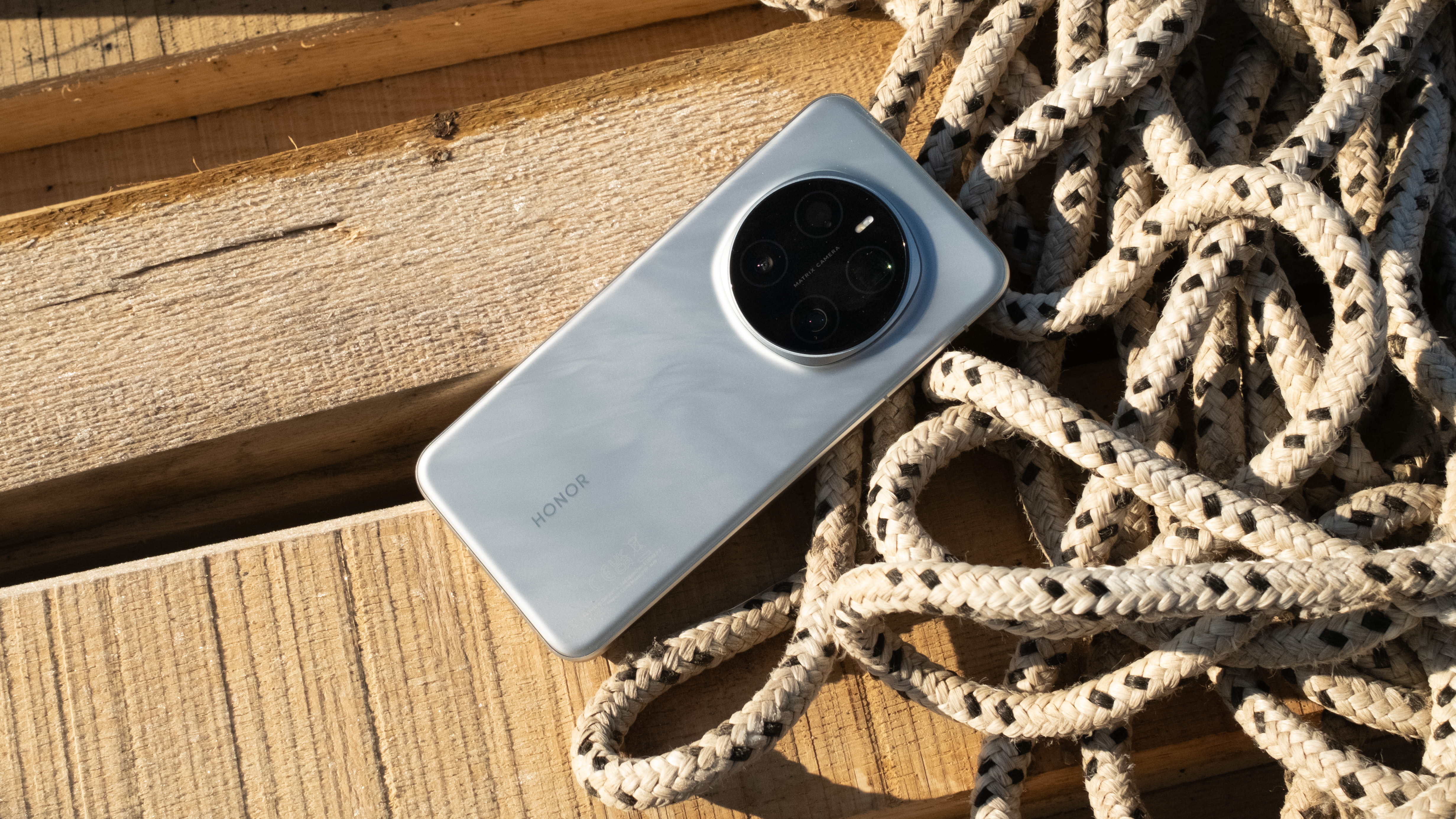
Specifications
Reasons to buy
Reasons to avoid
The Honor Magic 7 Pro's AI camera features made such an immediate impression on me in testing that I had to throw it into the best Android camera phone list.
Firstly, this is a gorgeous phone, especially in the pearly lunar grey color, the design feels premium and solid, with an IP68/69 rating for taking photos in the rain and snow – and the screen is a stunning edge-to-edge design that thankfully is not curved.
But this device wasn’t just about good looks – diving into its camera capabilities, I found the Magic 7 Pro to be refreshingly versatile, with an impressive sensor selection that delivered images with a lot of detail whether I was shooting in broad daylight or in low-light conditions, the dynamic range was balanced and color were mostly very natural and pleasing, although sometimes it had the tendency to overplay the saturation and contrast in some situations. It is not the class leader in quality but it is a very solid camera phone.
But where the Honor Magic 7 Pro is really fascinating is with how it has implemented AI features directly into the camera. There are a range of AI-assisted modes, from portrait cleanup to smart capturing movement, but the headline grabber is AI-assisted zoom which kicks in after 30x digital zoom to use AI to enhance your images. Results are very mixed, with the AI tending to be a little too imaginative, but it is a really exciting glimpse at the future of AI in phone photography.
Performance-wise, this phone is a real pleasure to use. Its processing speed ensures that the transition from framing to capturing is seamless, and there were no troublesome slowdowns when editing images or video.
The Honor Magic 7 Pro deserves a spot on this list for a compelling balance between innovative camera features, robust performance, and stylish design – if you want to be at the cutting edge of camera phone tech then this is the phone for you.
Read more: Honor Magic 7 Pro review
Comparisons
Below, you can see comparisons of the camera systems on all the models in this guide broken down into the key technical components. Do top specs necessarily translate to better images? Well, not alone, and while we have seen engineers do some pretty amazing things with less powerful components, you can't beat good old-fashioned psychics. The size of a sensor or pixels is a good indicator of what a camera system is theoretically capable of – before each brand applies its own algorithms and AI wizardry.
How to choose the best Android phone
The main considerations to look at when buying a new Android phone are the camera, design, and price.
Let's start with the camera, or cameras, as most modern smartphones come with two or more cameras offering different perspectives. To pick the right camera for you, you need to ask yourself what you like taking pictures of, if you take a lot of close-up shots, make sure that the Android phone you pick has a good macro mode, if you like wide dramatic landscapes, then opting for a phone with the best wide-angle camera is essential, and for far away shots, a good telephoto lens is a must.
It is easy to get carried away with cameras and specs though, but you'll find most Android phones offer a great experience. Find the design that resonates with you, with the features you really need, and luckily there is an Android phone to suit practically every budget.
Can I transfer my App Store purchases from my iPhone?
Unfortunately, any apps or content purchased directly from the Apple App Store can only be used on Apple devices, you would need to repurchase any apps or content again from the Google Play store. The only exception is any subscriptions to Apps or services you have signed up for, via Apple's store, which might be valid on any device where that app or service is offered. Just remember to change your billing information and cancel your subscription with Apple if you intend to completely move away from Apple devices.
Why does Android look different on different phones?
Android is the core OS that powers all these phones and manages the way the phones function, but this is separate from how Android looks – and each manufacturer is free to come up with their own take on the OS's style. Google as the developer of Android offers the most "stock" version of how they intend the underlying Android to be interacted with, and also emphasizes Google's comprehensive apps and services. Other phone makers have their own services and features that they want to push – Samsung for example has an extensive ecosystem of apps and devices. So what Android phone you buy might well depend on if you like the look of that phone's take on Android.
How we test Android phones
As a photography website, I pay special attention to the photo and video quality of Android phones. Camera phones are all-around digital assistants too, of course, so I will also check general handling, usability, and practicality – such as battery life. And as I do more and more editing on my phone now – it's essential that my choice has a sharp and color-accurate screen.
To test Android phone cameras I take hundreds (sometimes thousands) of photos with the phone and carefully compare the images side by side to look for any inconsistencies in quality or color between shots. I also compare Android phone cameras to one another – I keep a range of the latest phones on hand, so I can take the same pictures with multiple devices and see which performs best.
For images, I rate resolution, noise, and color rendition in the context of what rival Android phones can do, and what the manufacturer promises. I also test all the special camera features, such as ‘night modes’ or ‘portrait modes’ to see their effectiveness, and how they compare to rivals.
I can then put all the data, as well as a healthy dose of my informed opinion, together in this list to help you decide on which might be the best Android phone for your photography needs.
Deals
The best camera deals, reviews, product advice, and unmissable photography news, direct to your inbox!

Gareth is a photographer based in London, working as a freelance photographer and videographer for the past several years, having the privilege to shoot for some household names. With work focusing on fashion, portrait and lifestyle content creation, he has developed a range of skills covering everything from editorial shoots to social media videos. Outside of work, he has a personal passion for travel and nature photography, with a devotion to sustainability and environmental causes.
